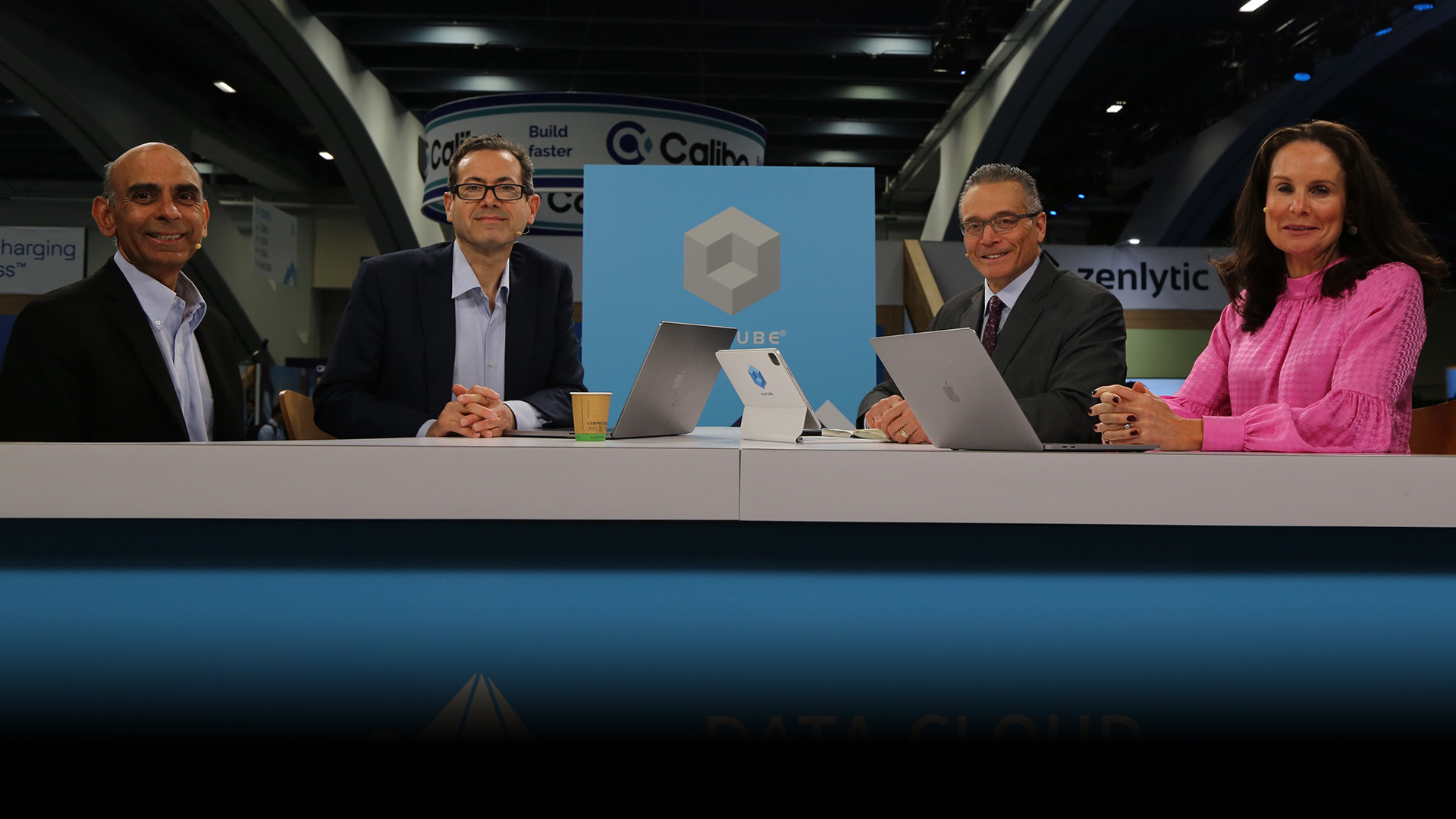 AI
AI
 AI
AI
 AI
AI
Snowflake Inc. is never far from any data cloud discussion, but the company stands at a crucial crossroads, with its future hinging on key strategic decisions.
Several transitions have thus followed, including leadership changes brought on by the evolving demands of the emerging open data landscape — particularly in the era of artificial intelligence.

TheCUBE live on set at Data Cloud Summit.
“On the topic of this crossroads/inflection point, there’s a couple of things going on that call for a wartime CEO, which is what Sridhar [Ramaswamy] is,” said George Gilbert (pictured, second from left), principal analyst at theCUBE Research. “Simplicity comes from integration. But at the same time, there’s this countervailing force where customers are saying, ‘Data is the asset that drives all my applications, and I need to be able to get at that data without going through necessarily one engine.'”
Gilbert and Sanjeev Mohan (left), principal at SanjMo, spoke with theCUBE’s Rebecca Knight (right) and Dave Vellante (second from right) at Data Cloud Summit, during an exclusive broadcast on theCUBE, SiliconANGLE Media’s livestreaming studio. They discussed Snowflake’s journey as emblematic of broader industry trends, where simplicity, openness and innovation intersect. (* Disclosure below.)
Snowflake’s value proposition has historically focused on an integrated stack within its ecosystem, where all data is housed. However, the industry is moving toward openness, with innovations such as open table formats in Iceberg challenging the traditional walled-garden approach.
“Iceberg is the first step in this transition to open data, but it’s a journey. It’s not one step,” Gilbert said. “Right now where they announced Polaris, it’s basically a simple technical metadata catalog for unmanaged Iceberg tables. It’s a small step, but we need to get to the point where any engine can read or write to those Iceberg tables as first-class citizens.”
By open-sourcing Polaris, Snowflake is responding agilely to the growing importance of metadata in the data landscape. Concerns are being raised, though, about Snowflake’s ability to maintain its competitive moat while adapting to new, more open data paradigms, according to Mohan.
Snowflake’s competition with Databricks Inc. highlights the industry’s bifurcation. Databricks has made strides with its Unity catalog, emphasizing metadata and multiple engines. In contrast, Snowflake must navigate the complexities of opening up its data while maintaining its services’ simplicity, with the Polaris announcement as a strong showing in that regard, according to Mohan.
“Customers are saying, ‘We want to have the cake and eat it too,'” he said. “On one hand, they want the simplicity, and Snowflake provides that amazing technology, amazing engine. But, on the other hand, they want the optionality of bringing any engine to bear. So, you are seeing both these extremes.”
In a nutshell, Snowflake’s future strategy is doubling down on its integrated platform, investing heavily in AI and focusing on developers and application development. The company’s new leadership under CEO Sridhar Ramaswami, an AI expert, embodies this strategic direction. Snowflake aims to educate the market on the value of its integrated platform, particularly in the context of streaming, analytics and machine learning. Getting it right, however, will involve Snowflake incorporating its version of a gen AI semantic layer, according to Gilbert.
“If gen AI is going to be used successfully to interact with the data, not as a call-out and to sentiment and parse documents, but for end users, business analysts, data analysts and data engineers to interact with the data, that semantic layer is critical,” he said.
Here’s the complete AnalystANGLE, part of SiliconANGLE’s and theCUBE Research’s coverage of Data Cloud Summit:
(* Disclosure: TheCUBE is a paid media partner for Data Cloud Summit. Neither Snowflake, the sponsor of theCUBE’s event coverage, nor other sponsors have editorial control over content on theCUBE or SiliconANGLE.)
THANK YOU